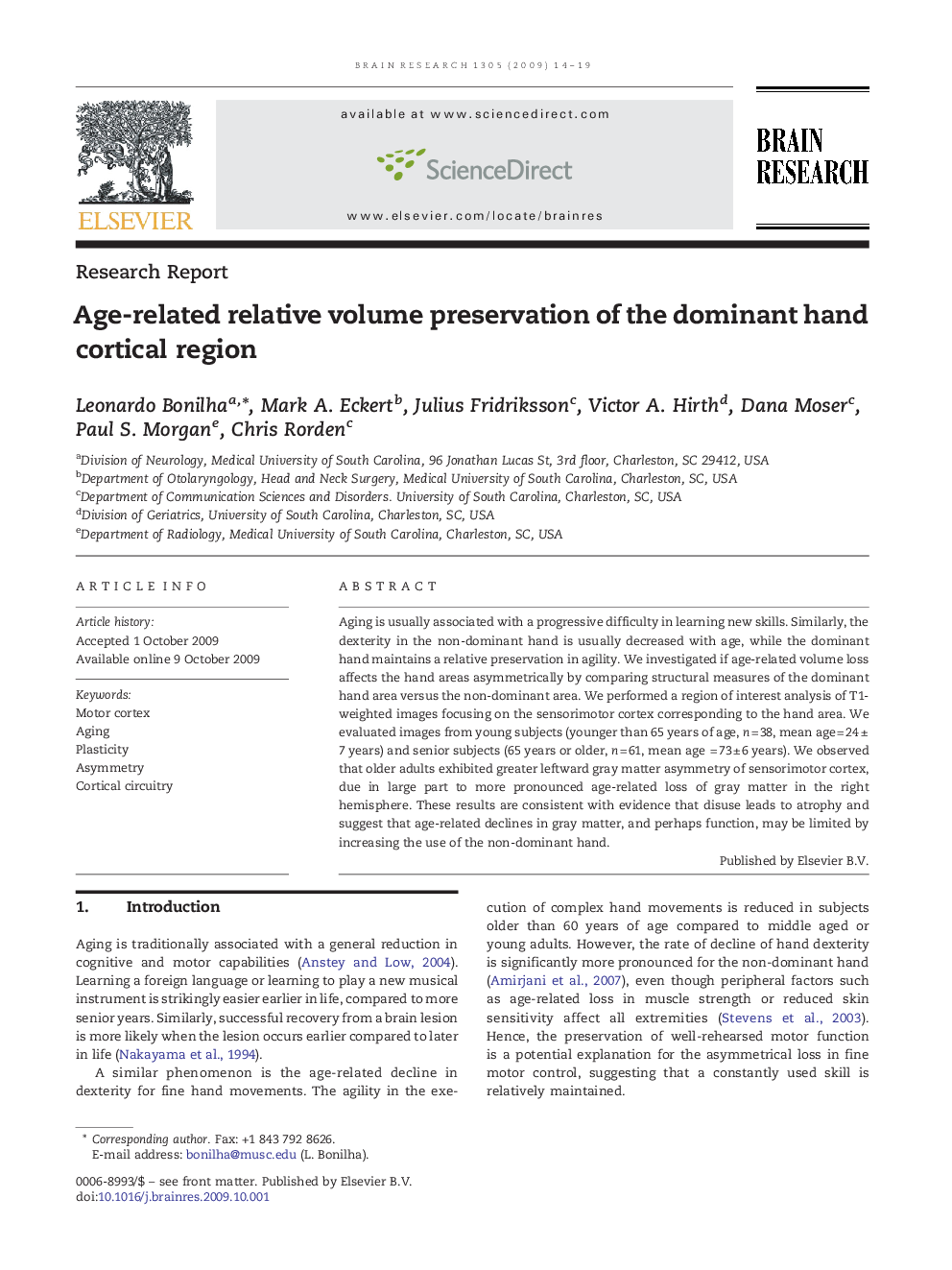| Article ID | Journal | Published Year | Pages | File Type |
|---|---|---|---|---|
| 4327659 | Brain Research | 2009 | 6 Pages |
Aging is usually associated with a progressive difficulty in learning new skills. Similarly, the dexterity in the non-dominant hand is usually decreased with age, while the dominant hand maintains a relative preservation in agility. We investigated if age-related volume loss affects the hand areas asymmetrically by comparing structural measures of the dominant hand area versus the non-dominant area. We performed a region of interest analysis of T1-weighted images focusing on the sensorimotor cortex corresponding to the hand area. We evaluated images from young subjects (younger than 65 years of age, n = 38, mean age = 24 ± 7 years) and senior subjects (65 years or older, n = 61, mean age = 73 ± 6 years). We observed that older adults exhibited greater leftward gray matter asymmetry of sensorimotor cortex, due in large part to more pronounced age-related loss of gray matter in the right hemisphere. These results are consistent with evidence that disuse leads to atrophy and suggest that age-related declines in gray matter, and perhaps function, may be limited by increasing the use of the non-dominant hand.
